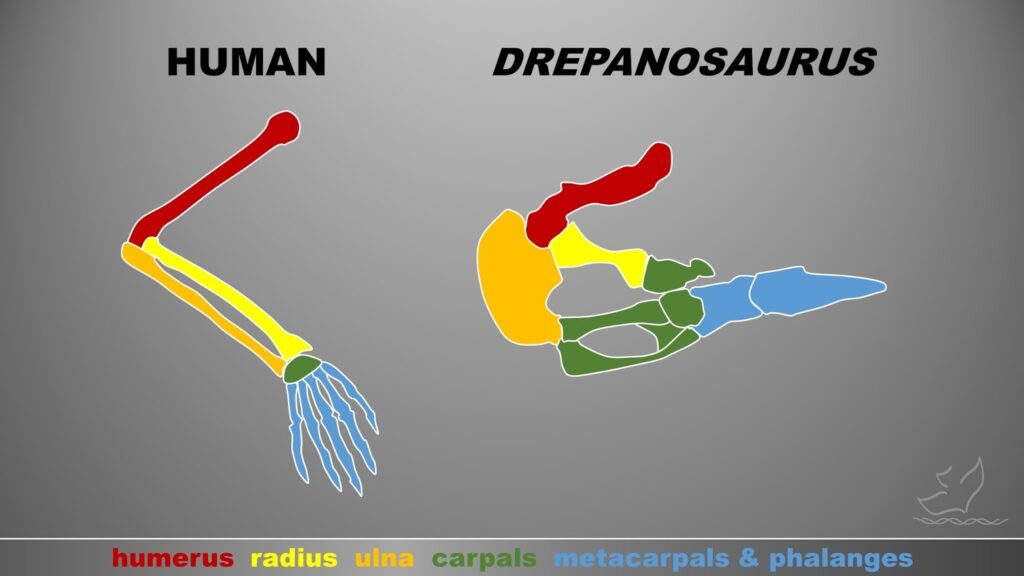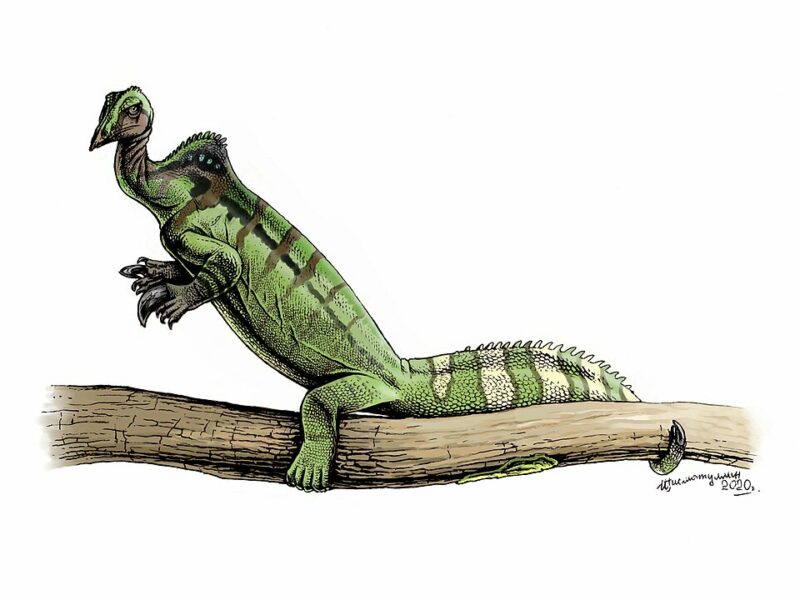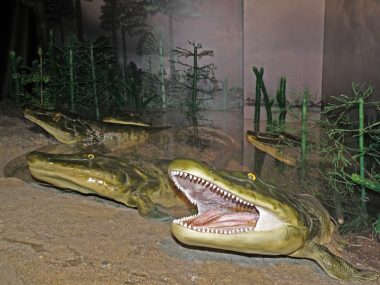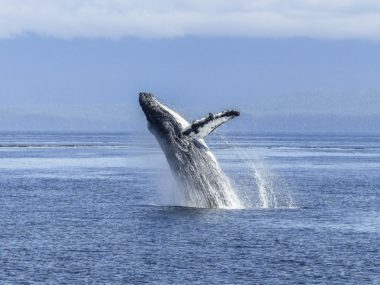A recently-discovered fossil from the Triassic Chinle Formation of New Mexico has an arm with a completely unique and bizarre arrangement of bones. Described by Pritchard et al. in Current Biology, The fossil is a reptile called Drepanosaurus, and its forefinger is enlarged like a digging tool.1 That would be weird enough, but the lower half of its arms also have strange-looking wrist bones.
The following article has been reblogged with permission from Todd’s Blog. The views expressed reflect those of the author, and not necessarily those of New Creation.

In humans (like most vertebrate animals), there is one bone in the upper arm (called the humerus) and two bones in the lower arm (called the radius and ulna). We have tiny little wrist bones called carpals, and then come our finger bones (metacarpals and phalanges). This Drepanosaurus fossil has a humerus, radius, and ulna, but its carpals are enlarged and look like an extra radius and ulna. The forefinger is enlarged to look like a digging tool (it has other fingers not shown in the above diagram).
There are other animals with modified carpals. Most famously, the giant panda has an enlarged sesamoid carpal, which makes it look like it has six fingers. To my knowledge, there isn’t anything so extreme as Drepanosaurus. I certainly get that impression from the BBC.
What lesson can we learn from this? Creationists might be tempted to think that this fossil invalidates homology, the pattern of similarity of bones between different species. Again, you might get that impression from exaggerated headlines. But let’s look again: the humerus, radius, and ulna are all there, and the weird, extra bones aren’t really extra. They’re just unusually large carpals. So the bones are all where they’re supposed to be, as we would expect from homology.
Homology is interpreted as an evolutionary relationship by modern biologists, but in the nineteenth century, Richard Owen understood homology to be a design pattern used by the Creator. He would be quite happy with Drepanosaurus, which once again follows the rules of homology.
Footnotes
- Pritchard, A. C., Turner, A. H., Irmis, R. B., Nesbitt, S. J., & Smith, N. D. (2016). “Extreme modification of the tetrapod forelimb in a Triassic diapsid reptile,” Current Biology, 26(20), 2779-2786. ↩︎












Yes good point. All biology seems to be a single idea. then siversity within that. Indeed if evolution was true one should expect after all that proposed time that there would be such variation in homology as to make it obvious evolution has gone on. Instead its as it would look if no evolution went on since creation week and minor details afterb the fall.
likewise creationists should realize dinosaurs likely are just the same creatures we have vtoday with minor differences. So theropods are just bords and sauropods probably just deers and horses etc before the flood. after just morphed differently.
As a Triassic enthusiast, I am so happy you wrote about Drepanosaurus! Such a weird little critter.